VIRTUAL EXHIBITION
Join us on a journey of discovery, explore the musical heritage and experience the interconnected cultural roots of Europe.
Music as a universal language and phenomenon that transcends borders brought together numerous musicians from different corners of Europe to Slovenian cities. They went on to write an important part of Slovenian cultural and music history. Moving between the Austrian Empire’s crown lands was a common practice among nineteenth-century musicians in search of better economic opportunities. The term “migration” is therefore understood in a broader sense as moving from one geographical area to another, regardless of the political borders of the time.
Introduction
I. MUSIC MIGRATION AND THE INFLUX OF MUSICIANS
From the late eighteenth century until the dissolution of the Austro-Hungarian Empire, musicians from abroad played a key role in the development of Slovenia’s musical culture. They predominantly came from Austrian territory and the Czech lands. Initially, they promoted sacred music in churches and monasteries as composers, copyists, regentes chori, organists, singers, and instrumentalists. At the beginning of the nineteenth century, however, they became increasingly important in secular musical endeavors. During the “long nineteenth century,” most immigrant musicians were active in Ljubljana, which was an important junction with well-established international connections. Therefore, many traveling artists stopped there and performed on the concert stage of the Philharmonic Society, founded in 1794. Some decided to settle in Ljubljana temporarily or even permanently, whereas others came by personal invitation or to fill vacant teaching positions. With their work they made a decisive contribution to the continued existence of cultural institutions such as the Philharmonic Society, the Ljubljana Cathedral music chapel, the Estates Theater, later Provincial Theater, and the infantry regiments, working as music teachers in various institutions or entirely privately. Towards the end of the nineteenth century, various music societies and associations were founded throughout Slovenian territory. Here, too, these musicians from abroad took up leading roles: at the German-speaking music associations in Maribor (Marburger philharmonischer Verein), Celje (Cillier Musikverein), and Ptuj (Pettauer Musikverein); at the Slovenian Reading Society in Ljubljana (Narodna čitalnica) and the Music Society (Glasbena matica) in Ljubljana; and several smaller music associations. At the beginning of the twentieth century, they also shaped concert life at the Slovenian Music Society’s branches in Novo Mesto, Gorizia, Trieste, Celje, and Kranj, as well as that of the Pan-Slavic oriented (and later more Slovenian-oriented) Trieste National Hall (Narodni dom v Trstu). They participated in more than 2,250 major concerts and wrote more than one thousand compositions.
.
For more than a century, musicians from abroad brought contemporary repertoire to Slovenia and composed numerous works here. They played a leading role in the development of virtuoso instrumental playing as well as chamber, choral, and symphonic music. By introducing curricula and writing music manuals and songbooks, they also brought many important changes to music education. They trained the first important generation of Slovenian musicians, individuals who carried their tradition forwarded and transmitted a legacy from which we still benefit today.
Employment of
MUSICIANS
In addition to musicians employed by music societies or infantry regiments, one of the largest groups of musicians from abroad—singers, conductors, and orchestra members—was concentrated in opera productions in the theaters. Most of the female musicians from abroad were engaged at the Estates Theatre, the Provincial Theatre, and the Slovenian National Theatre in Ljubljana, as well as at the Municipal Theater (Stadt-Theater) in Maribor and Ptuj. Family ties between foreign musicians were also a common feature; in several cases the principal artists were joined by spouses or siblings who were often also musicians.
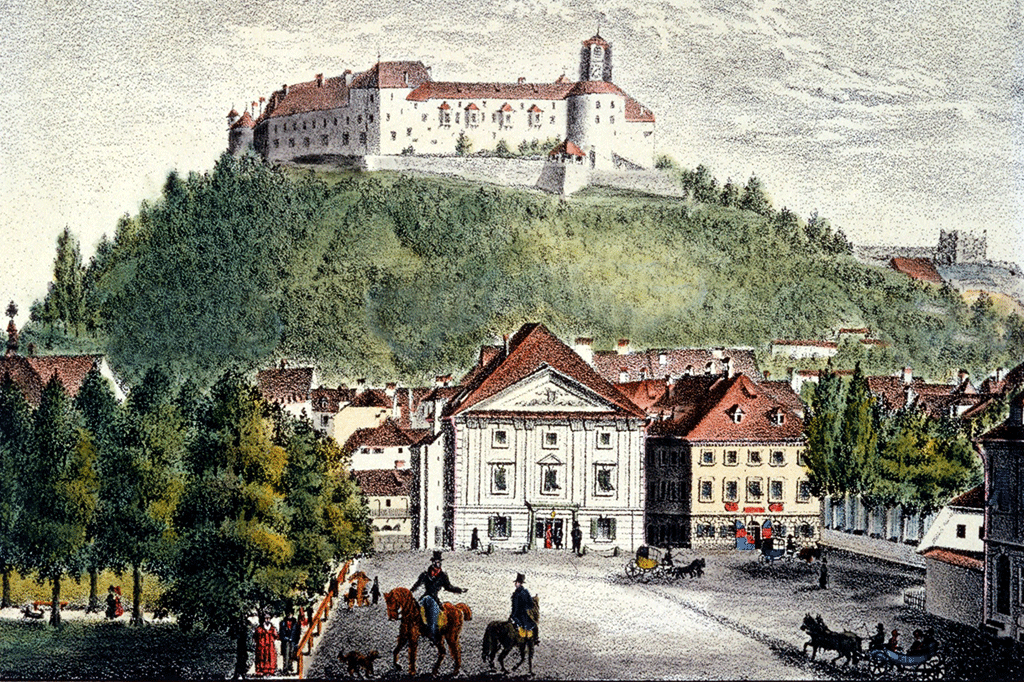

Employment of immigrant musicians in various music institutions in the Slovenian lands
Origins of
MUSICIANS
Most immigrant musicians came from Bohemia, Moravia, and Austria; mainly the cities of Prague, Vienna, and Graz. A smaller group of musicians came from beyond the borders of the Austrian Empire, mainly from German territory but even distant cities such as Athens, Jelgava, Kaliningrad, Stavropol, Warsaw, Odesa, and London. Czech territory produced a large number of musicians due to the musically very stimulating environment in Moravia and Bohemia, where even in the smallest villages the peasants sang and played various instruments during high mass in their churches, and children of both sexes received music lessons in every school.
The origins of the immigrant musicians
The reason why so many musicians came to the Slovenian territory from Bohemia and Moravia was the broad music education in the Czech territory, where even the common people were very musical. There was also a tradition: before sending his son out as a salesman, a father made sure that he had learned to sing and play at school and mastered at least one instrument, so that he had a resource to fall back on.
Music Education of
MUSICIANS
In earlier times, most musicians were trained in their formative years by their family members, usually their fathers, or by village music directors. Gašpar Mašek was an exception; he received his higher education at the Prague Conservatory as part of its first class of students. Later, foreign musicians studied mainly in Prague and Vienna, and to a lesser extent in Graz, Leipzig, and Berlin. Many immigrant musicians were taught by violinist Antonín Bennewitz from Prague and pianist and composer Simon Sechter from Vienna. Other prolific teachers include Moritz Mildner, Otakar Ševčík, Joseph Joachim, Leoš Janáček, Joseph Hellmesberger Sr., and Franz Clement.
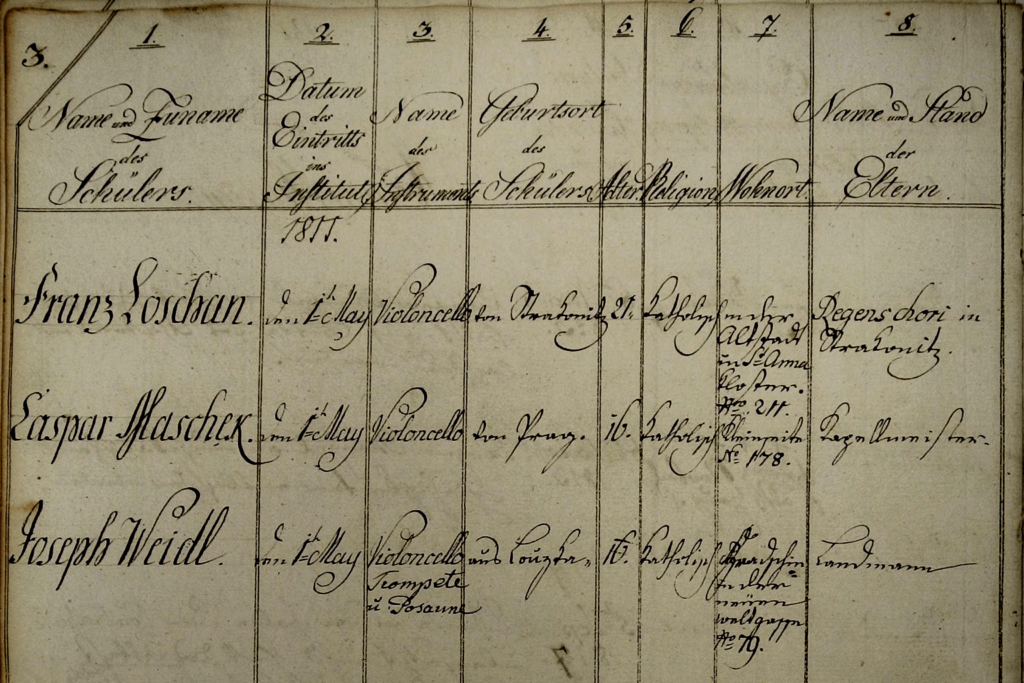
Places of music studies of immigrant musicians
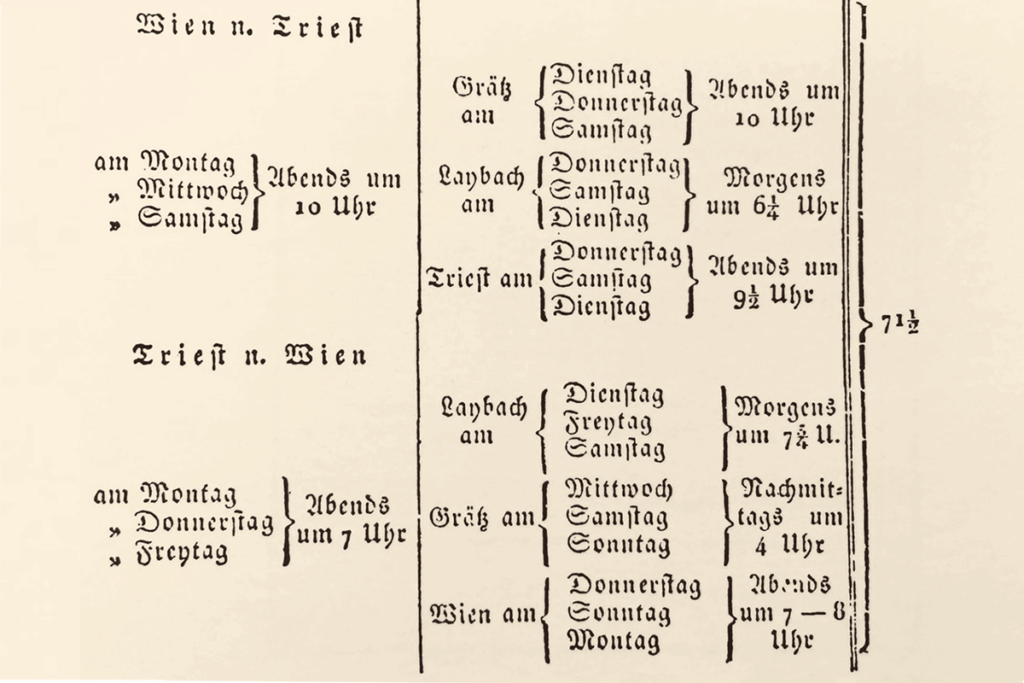

Migration
ROUTES
Musicians usually did not migrate directly from their hometowns. They often came to Slovenian posts from other cities after working there for a while. In many cases, they came from neighboring cities such as Graz, Klagenfurt, and Zagreb, where they had previously worked in theaters. Many of them sought employment here at the beginning of their careers, in their mid to late twenties, some even immediately after finishing their studies at the conservatories in Prague, Vienna, or Leipzig. Violinists were the largest group among foreign musicians, and female musicians were in the minority. Mostly they were singers or pianists, and in rare cases violinists or composers.
Last place of residence before moving to the Slovenian lands
Lenght of
RESIDENCE
Many musicians from abroad spent only a short time here before finding better employment opportunities elsewhere, whereas some others came only after they had retired. A few musicians settled and became fully integrated into their new cultural environment, in some cases remaining for several decades. Because of their contribution to the development of Slovenian choral music, some of them are recognized as important Slovenian composers, whereas others—no less meritorious musicians active in other musical domains—have been unjustly overlooked until now. For example, several famous conductors began their careers in Slovenia, including Gustav Mahler and Václav Talich.
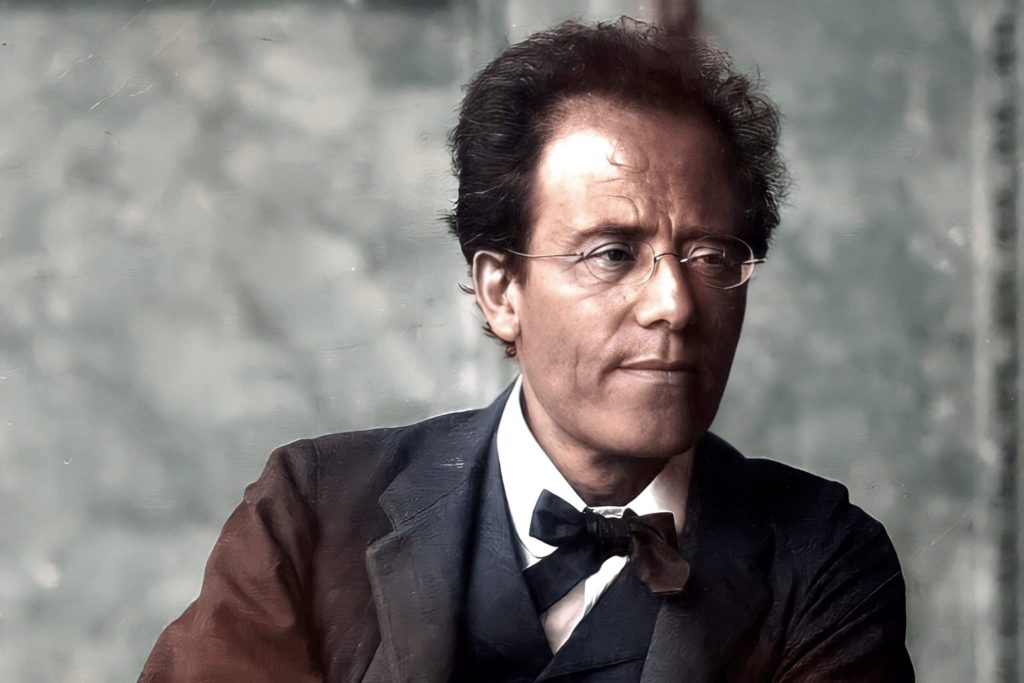
Arrival Time of Important
IMMIGRANT MUSICIANS
Franz DUSSEK (1765–after 1816)
Wenzel WRATNY
Anton HÖLLER (1760–1826)
Mäthaus BABNIG (1787–1868)
Valentin LECHNER (1777–1849)
Leopold Ferdinand SCHWERDT (1773–1854)
Franz SOKOL (1779–1822)
Caspar MASCHEK (1794–1873)
Amalie MASCHEK (1792–1836)
Joseph BENESCH (1795–1873)
Friederike BENESCH (1805–1872)
Franz R. KNOLL
Joseph LEITERMAYER (1808–?)
Carl TILL
Josephine HADERLEIN
Joseph LEITERMEYER
Alfred KHOM (1825–1893)
Theodor ELZE (1830–1895)
Heinrich FIBY (1834–1917)
Anton NEDVĚD (1828–1896)
Carl ZAPPE (1837–1890)
Josef ZÖHRER (1841–1916)
Gustav MORAVEC (1837–1916)
Hans GERSTNER (1851–1939)
Gustav MAHLER (1860–1911)
Carl Maria WALNER (1861–1916)
ADOLF BINDER (1845–1901)
Erich W. DEGNER (1858–1908)
Heinirch WEIDT (1824–1901)
Viktor Roman MOSER (1864–
Karel HOFFMEISTER (1868–1952)
Karel JERAJ (1874–1851)
Hans ROSENSTEINER (1864–1911)
Josef VEDRAL (1872–1929)
Josef PROCHÁZKA (1874–1956)
Moritz SCHACHENHOFER (1878–1909)
Karl Paul SEIFERT (1881
Oskar RIEDING (1846–1916)
Alfred KLIETMANN (1884–1931)
Václav TALICH (1883–1961)
Richard ZIKA (1897–1947)
JAN ŠLAIS (1893–1975)
RŮŽENA ŠLAIS (1888–1969)
Music Societies
SLOVENIAN LANDS
The immigrant musicians played an important role mainly in music societies, which were generally intended to bring together like-minded musicians and their followers. Nineteenth-century music societies were founded and led by bourgeois musicians of various professions, usually teachers with appropriate music training, who were aware of the role of music societies in the social growth, political power, and artistic development of the bourgeoisie. The emergence of choirs and music societies within bourgeois society was linked to sociopolitical or national motives, justified by the French Revolution as a harbinger of great social changes. The Napoleonic Wars led to a marked decline in social gatherings and cultural encounters and subsequently to the establishment of music societies or evening choral societies (Liedertafeln), in which four-part male singing was performed for entertainment. In addition to men’s choirs, music societies were founded as early as the first half of the nineteenth century as associations of singers, instrumentalists, and music lovers dedicated to public music-making and music education. In the first half of the century, men’s choral societies and various music societies in multiethnic countries like the Austrian Empire were not nationally charged and therefore brought people of different nationalities together. Things only became more difficult with the political changes after 1848, or from the late 1860s onwards with the demands for greater federalization of the monarchy. Within the Austrian Empire, men’s choral societies and societies with vocal and instrumental activities flourished, first in Vienna, but soon also in cities with Slovenian populations: Klagenfurt, Ljubljana, Maribor, Celje, Novo Mesto, Ptuj, and elsewhere. Musical activities developed mainly in towns with theaters, where musically gifted amateurs participated in plays with singing. For various reasons, some of the music societies founded at the beginning of the nineteenth century soon died out and were reestablished only in the second half of the nineteenth century. Immigrant musicians played roles in all the important music societies in Slovenia.
Music Societies
TIMELINE
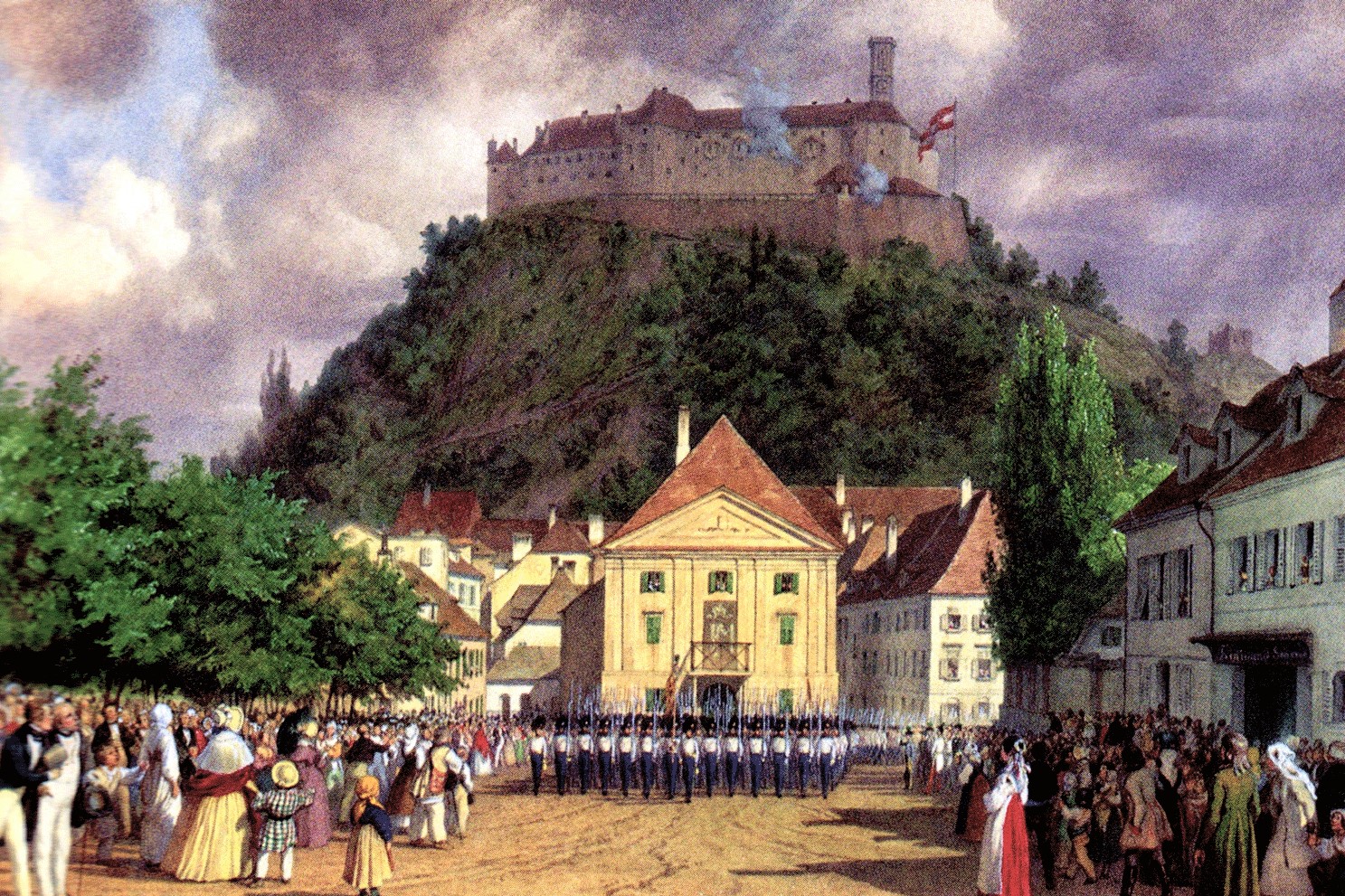
LJUBLJANA
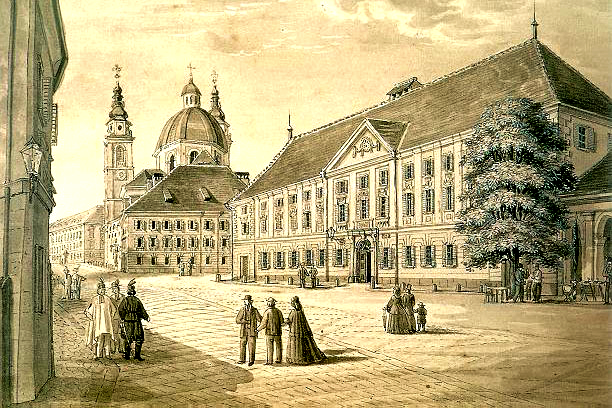
LJUBLJANA
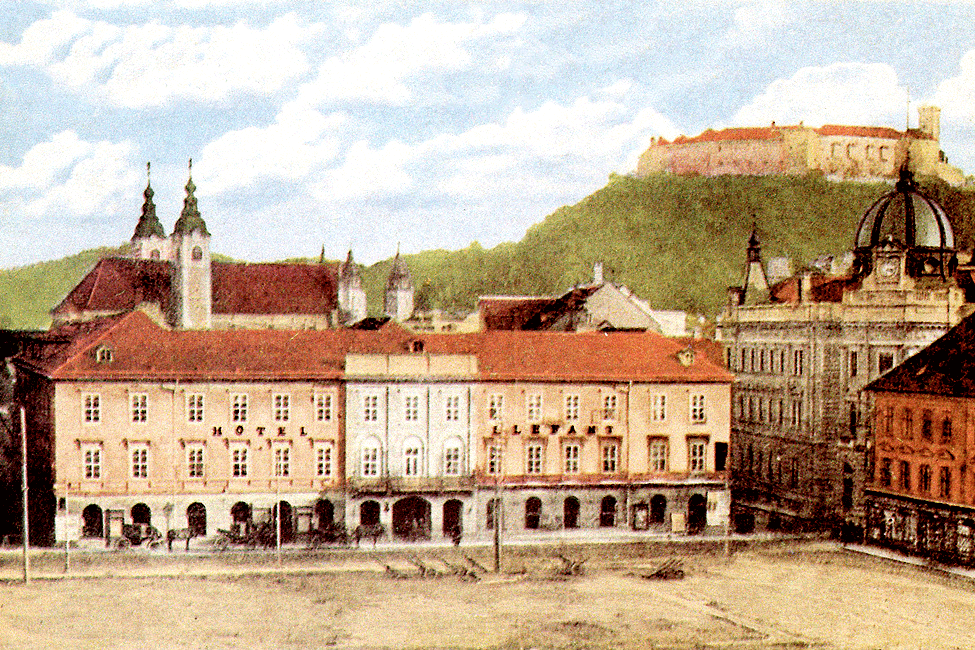
LJUBLJANA
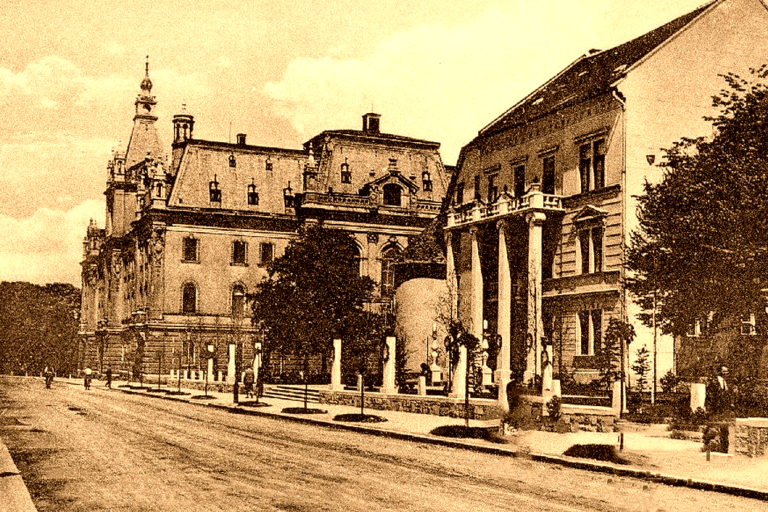
LJUBLJANA

PTUJ
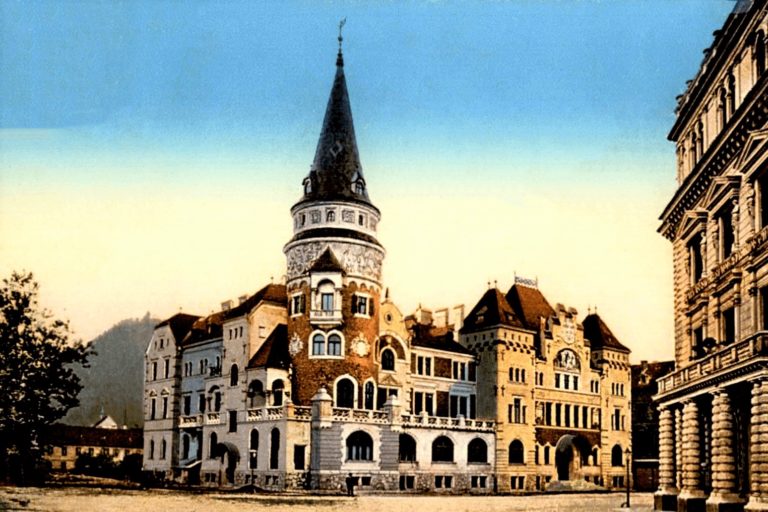
CELJE
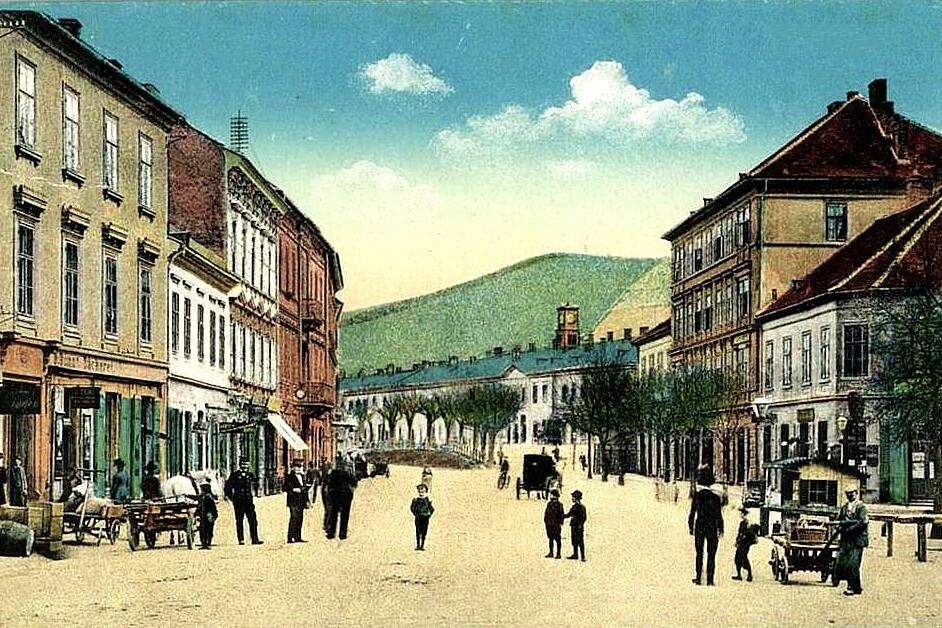
MARIBOR
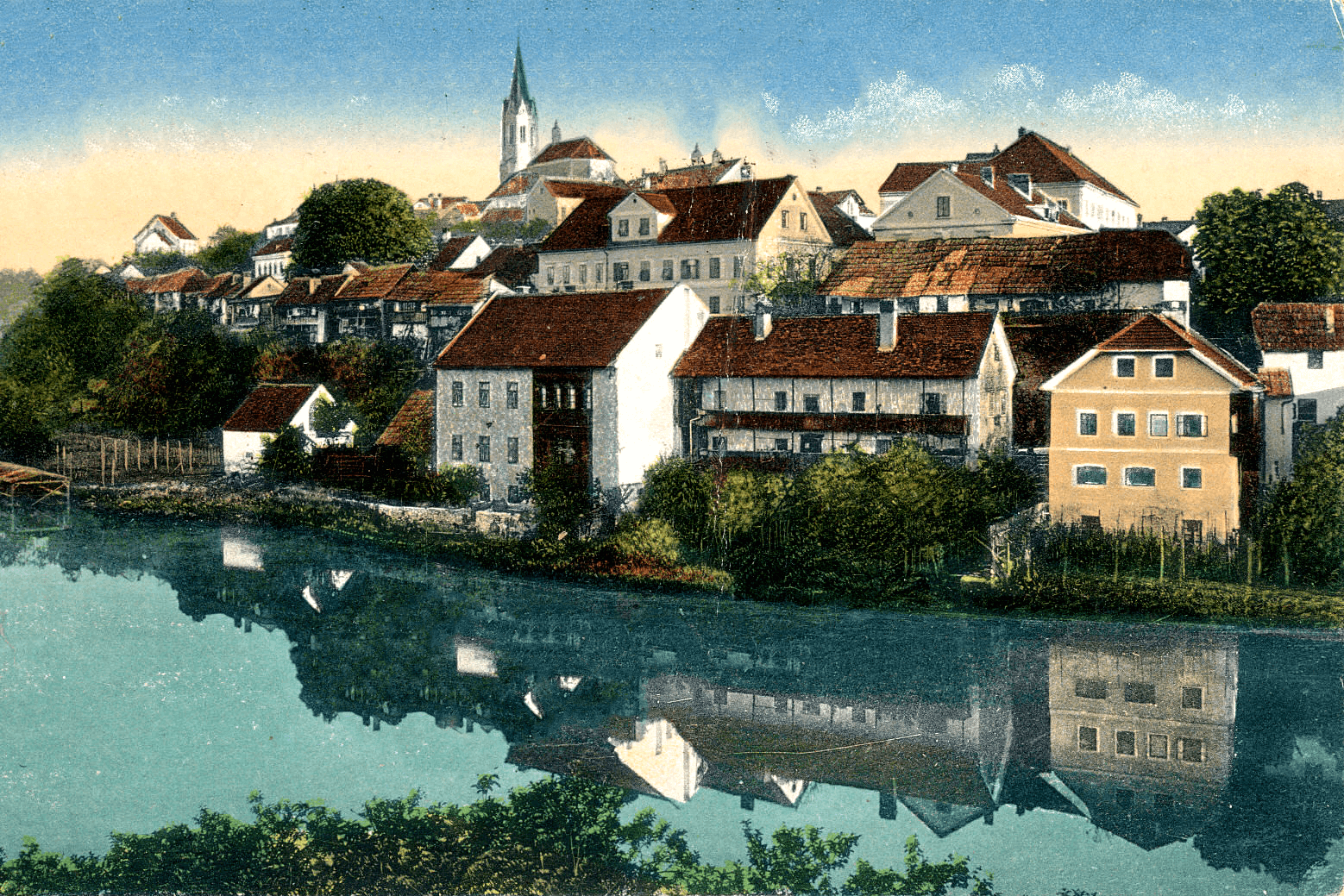
NOVO MESTO
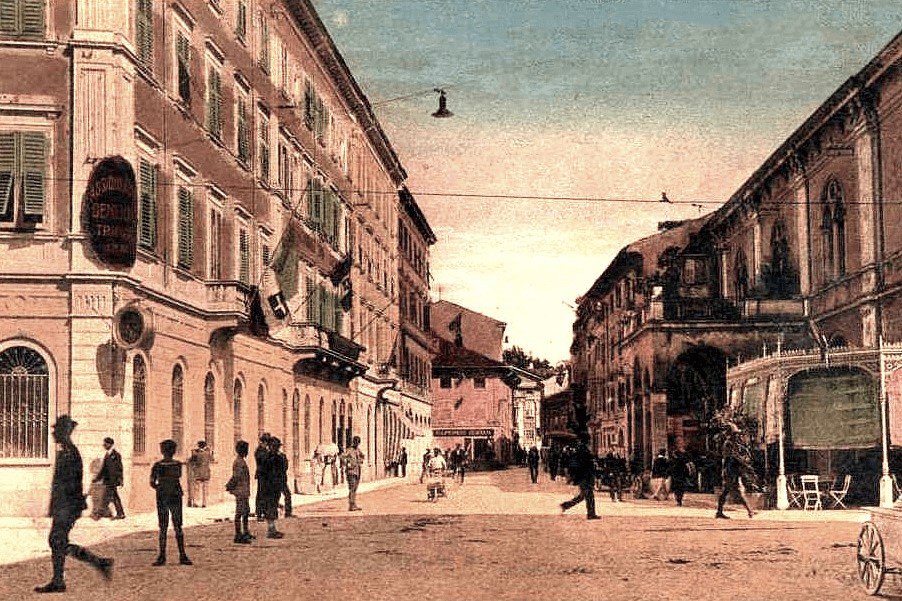
GORIZIA | GORICA
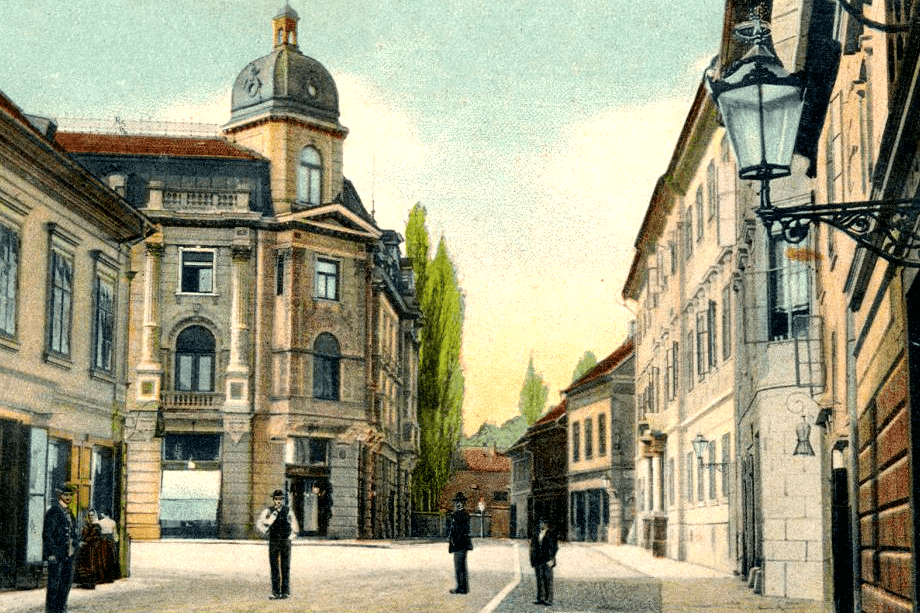
CELJE
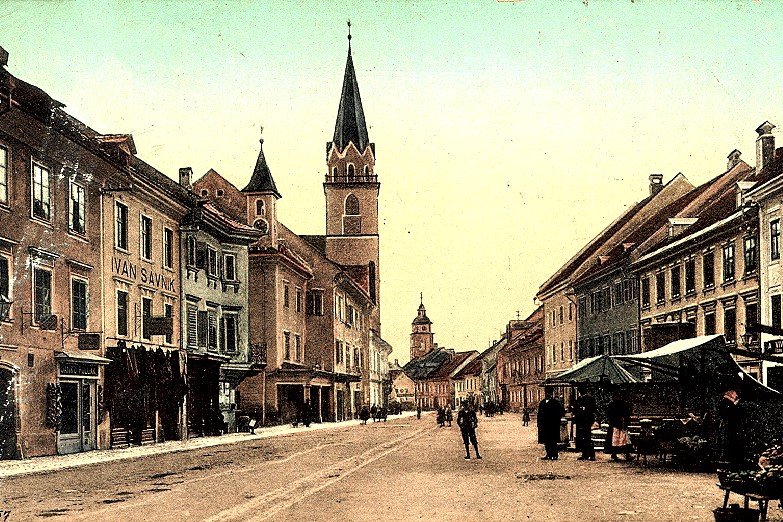
KRANJ
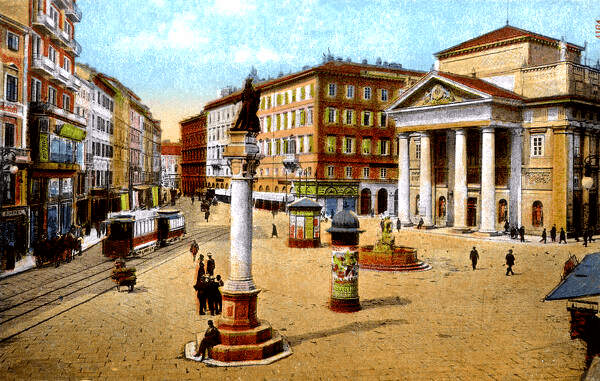
TRIESTE | TRST
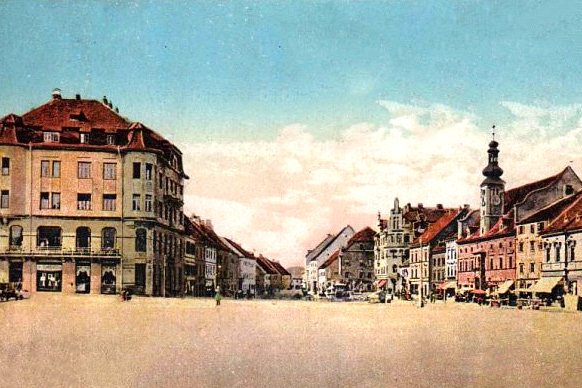
MARIBOR
Organized concerts per institution



